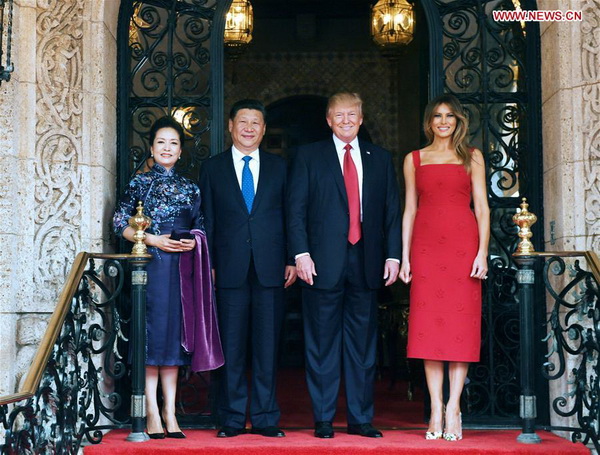


This Saturday will mark the 100th-day of Trump’s presidency and one achievement he can celebrate is helping to strengthen the China-U.S. relationship. At the Mar-a-Lago summit, the two sides established the Comprehensive Dialogue, a four-pillar framework that advances the previous dialogues by including additional areas of common concern for high-level consultation, which indicates that the two powers are willing and able to control and manage their differences.
Since 2006, China and the U.S. have relied on high-level dialogues to help manage differences and promote cooperation. In September 2006, U.S. President George Bush and President Hu Jintao created the Strategic Economic Dialogue (SED), a first-of-its-kind dialogue in the bilateral relationship designed to enhance mutual strategic trust and strengthen mutually beneficial economic cooperation. In a speech that touched on China-U.S. relations, President Bush said the high-level dialogues would help “ensure long-term growth and widely-shared prosperity in both our economies.”
The next administration took note and worked with China to advance such cooperation. In April 2009, U.S. President Barack Obama and President Hu established the Strategic and Economic Dialogue (S&ED) during their first meeting on the sidelines of the G-20 Summit in London, which brought the two major powers even closer together. At the conclusion of the S&ED in May 2011, U.S. Secretary of State Hillary Clinton applauded the dialogue for developing patterns of cooperation. “We have a deeper understanding of the viewpoint of the other,” she said. “We have built trust.”
In May 2010, the high-level mechanism for people-to-people exchange was included in the S&ED framework to build greater trust between the two peoples. This brought the total number of dialogues to three. Now, it will be based on four pillars, a sign that China-U.S. relations continue to mature.

At the meeting between President Xi Jinping and his U.S. counterpart Donald Trump at Mar-a-Lago, the two leaders fostered a relationship and agreed to elevate bilateral ties by creating the Comprehensive Dialogue, a four-pronged, high-level mechanism designed to strengthen China-U.S. relations and make progress on diplomatic and security issues, economic issues, law enforcement and cyber security issues, and social and cultural issues. This new framework builds on the success of the previous dialogues and will help steer the bilateral relationship in the right direction.
The continued advancement of high-level dialogues from the Bush and Obama administrations to the current administration is evidence that ties continue to strengthen, stabilize, and mature. It also shows that the two sides are willing to choose cooperation over competition, the only correct path. While there are too many variables and too many uncertainties to make predictions about the future of China-U.S. relations, continued patterns of cooperation are a positive sign and, as history shows, the high-level dialogues play an important role in helping build trust and confidence between the two countries. The recent decision to continue and build on the high-level dialogues should reinforce expectations that the China-U.S. relationship is on the right path and help dispel the old idea that the two sides are destined for war.

 Award-winning photos show poverty reduction achievements in NE China's Jilin province
Award-winning photos show poverty reduction achievements in NE China's Jilin province People dance to greet advent of New Year in Ameiqituo Town, Guizhou
People dance to greet advent of New Year in Ameiqituo Town, Guizhou Fire brigade in Shanghai holds group wedding
Fire brigade in Shanghai holds group wedding Tourists enjoy ice sculptures in Datan Town, north China
Tourists enjoy ice sculptures in Datan Town, north China Sunset scenery of Dayan Pagoda in Xi'an
Sunset scenery of Dayan Pagoda in Xi'an Tourists have fun at scenic spot in Nanlong Town, NW China
Tourists have fun at scenic spot in Nanlong Town, NW China Harbin attracts tourists by making best use of ice in winter
Harbin attracts tourists by making best use of ice in winter In pics: FIS Alpine Ski Women's World Cup Slalom
In pics: FIS Alpine Ski Women's World Cup Slalom Black-necked cranes rest at reservoir in Lhunzhub County, Lhasa
Black-necked cranes rest at reservoir in Lhunzhub County, Lhasa China's FAST telescope will be available to foreign scientists in April
China's FAST telescope will be available to foreign scientists in April